The moon is the solitary satellite of the Earth. It holds the distinction of being the second most luminous entity in the Earth’s atmosphere, following the Sun, and ranks as the fifth largest satellite in the entire solar system. Additionally, the Moon is significant as it has been explored by humans, making it the first and currently the only extraterrestrial object to be visited. Furthermore, it takes the Moon approximately 27 days, 7 hours, and 43 minutes to complete a full orbit around the Earth.
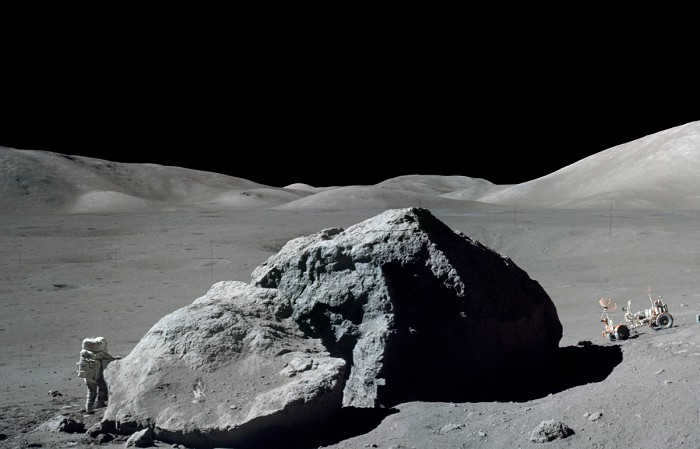
Astronaut X. Schmitt, who is from the United States, can be seen standing next to a rock on the moon. To the right of him is a lunar vehicle that was used by the Apollo 17 astronauts to explore the moon’s surface. This photograph was taken in December 1972.
What is the moon’s origin?
Although we may view the moon as something common and familiar in the night sky, it is actually a celestial object that holds many mysteries. One of the biggest mysteries surrounding Earth’s satellite is its origin.
Researchers had three primary theories about the origin of the moon before the first spacecraft reached it. The first hypothesis, jokingly referred to as the “daughter,” was proposed by George Darwin, a British astronomer and mathematician who was the son of Charles Darwin, the famous proponent of the theory of evolution. According to this hypothesis, the moon was once a part of the Earth that separated from it during a period when the Earth was rotating at a high speed. The powerful centrifugal force caused by the rapid rotation led to the separation, and the separated piece remained under the Earth’s gravitational influence, eventually taking on a spherical shape. George Darwin believed that the moon broke off from the area where the Pacific Ocean would later form.
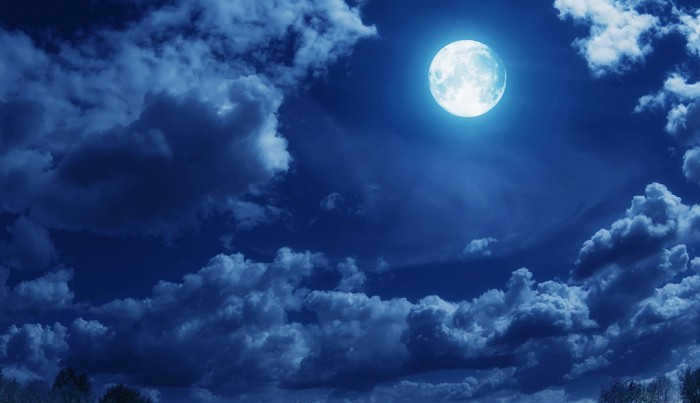
Astronomers have come up with a clever theory known as the “conjugal theory” to explain the Moon’s origin. According to this theory, the Moon is not just a satellite, but a planet in its own right. It is believed that the Moon formed in the solar system and its orbit happened to intersect with that of Earth. Due to Earth’s greater mass, it exerted enough gravitational pull to capture the Moon and make it revolve around itself.
Another theory, known as the sister theory, proposes that the Earth and its satellite formed simultaneously from the same dust cloud. In this scenario, the Moon became a satellite due to its smaller mass compared to Earth.
Following the delivery of soil samples from the lunar missions to Earth, astronomers held their breath in anticipation: which theory would prove to be correct? The results were disheartening, as none of the existing theories fully explained the data. However, a new hypothesis emerged suggesting that the Moon was formed as a result of a colossal collision between Earth and a larger planet known as Teia. This impact occurred tangentially, causing a portion of Earth’s and Teia’s matter to be ejected into Earth’s orbit, gradually forming the Moon.
Currently, the most widely accepted theory is the collision hypothesis, although it still faces opposition. It is possible that new hypotheses will arise in the future, or perhaps we may never truly know the exact origin of our planet’s satellite.
The Earth is four times larger than the Moon, and its mass is 80 times greater. The Earth’s diameter is more than four times larger than the Moon’s – 12,742 km. The average distance from the Moon to the Earth is 384,400 km.
The Moon is composed of a crust, upper mantle, middle mantle, lower mantle (asthenosphere), and core. Additionally, it has virtually no atmosphere. The lunar surface is coated with regolith, which is a combination of fine dust and rocky debris created from meteorite impacts.
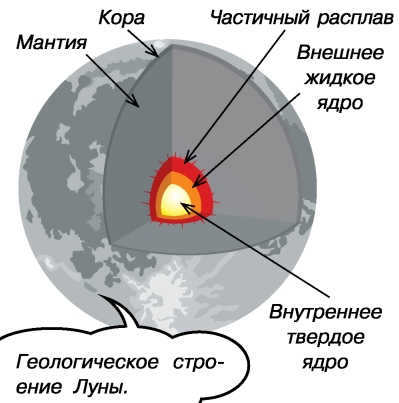
The composition and density of the Moon’s matter are very similar to that of the Earth’s mantle, leading to the hypothesis of a massive impact event. This is the most probable explanation for the presence of elements from the Earth’s middle layer in the Moon.
Artificial satellites captured the first images of the far side of the Moon in 1959.
Due to the absence of an atmosphere, the Moon experiences significant temperature fluctuations. The surface can reach temperatures as high as 117 °C during the day and drop to -169 °C at night. Although no water has been discovered on the Moon, there is speculation that ice might exist in the deepest craters. The harsh conditions make life impossible here.
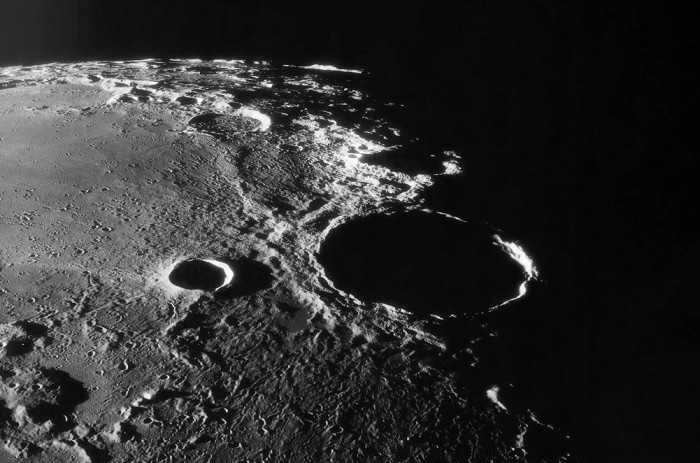
Similar to all other celestial bodies, the Moon emits a luminous glow as a result of sunlight bouncing off its surface. Typically, the illuminated portion of the Moon that is exposed to the Sun’s rays is visible to us. However, there are times, such as during the new moon phase, when the Earth’s faint reflection dimly illuminates the Moon, casting a shadow on its unlit side.
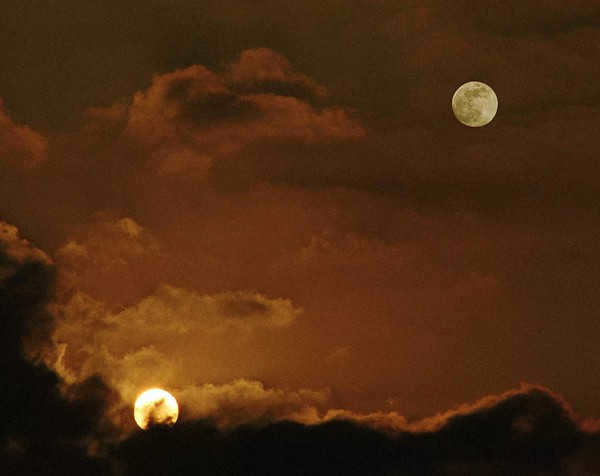
When viewed from Earth, the Moon and the Sun appear to be similar in appearance, despite their significant difference in size. This unique phenomenon can be attributed to an intriguing coincidence: the Moon is 400 times smaller than the Sun, yet it is positioned 400 times closer to our planet.
In 1835, a publication in a New York newspaper featured a peculiar story. An article claimed that a renowned astronomer had constructed an exceptionally powerful telescope and claimed to have witnessed unicorns and winged humanoids on the surface of the Moon. Astonishingly, many readers were convinced by this fantastical account!
Why is the Moon not always seen as a full moon? The Moon appears to us in the shape of a crescent or a half circle due to the way it is illuminated by the Sun. During a new moon, the Moon is positioned directly between the Sun and the Earth, making it invisible to us. Since the Moon does not emit its own light, only the side facing away from the Sun is illuminated. As the Moon moves slightly, we begin to see a small portion of its illuminated edge, which is known as the new moon. Over time, the illuminated portion of the Moon increases as it continues to move. When the Moon is in line with the Earth and the Sun, we see its fully illuminated side, resulting in a full moon. After this, the process reverses as the Moon enters the second half of its orbit, causing it to gradually appear smaller and smaller.
The Earth is orbited by the Moon. Depending on the positions of the Sun, Earth, and Moon in relation to one another, we observe the illuminated portion of the Moon in different ways. The illuminated section of the Moon’s visible surface is referred to as its phase.
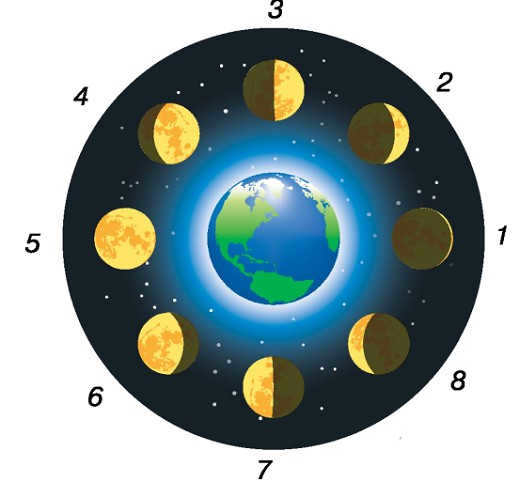
Phases of the Moon.
1 – New Moon: the Moon is not visible.
2 – young Moon: the first glimpse of the Moon in the sky after the new moon in the shape of a thin crescent.
3 – first quarter: half of the Moon is illuminated.
4 – waxing Moon.
5 – Full Moon: the entire Moon is illuminated.
6 – waning Moon.
7 – last quarter: half of the Moon is illuminated once again.
8 – old Moon.
The Earth experiences phases similar to the Moon. However, in order to observe them, one must view our planet from its natural satellite. This would allow for the sighting of the “Earth crescent” or “full Earth.”
Eclipses
A lunar eclipse occurs when the Moon enters the Earth’s shadow cone during an astronomical event. There are various types of lunar eclipses: a total lunar eclipse happens when the Moon is completely covered by the shadow, while a partial lunar eclipse occurs when only a portion of the Moon is darkened. Additionally, a penumbral eclipse takes place when the Moon passes through the penumbra region without entering the shadow.
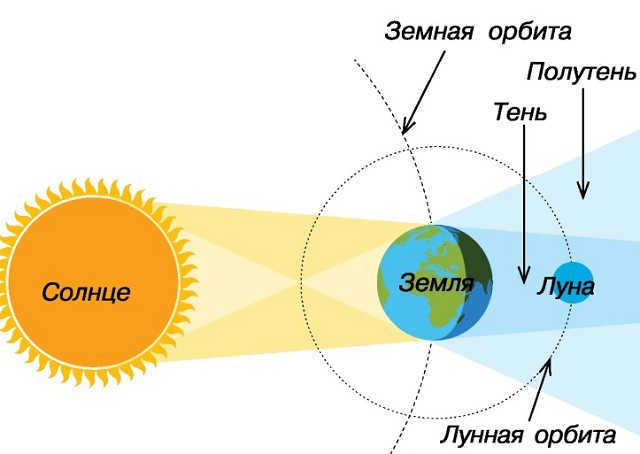
Lunar eclipses occur during full moons when the Moon aligns directly behind the Earth, causing our planet’s immense shadow to cast over it, blocking out sunlight.
Who was the initial individual to complete a full orbit around the Moon?
If you were to provide me with the identities of the American astronauts, Borman, Lovell, and Anders, who were the first humans to achieve a lunar flyby on the Apollo spacecraft in December 1968, you would be mistaken. The true pioneers of lunar orbit were Central Asian turtles.
The Moon is Earth’s sole natural satellite, orbiting around our planet. This astronomical phenomenon has been known since ancient times. Observers noticed dark patches of various shapes on the lunar surface, which were later labeled on lunar maps. From the 17th century onwards, these dark patches came to be known as seas.
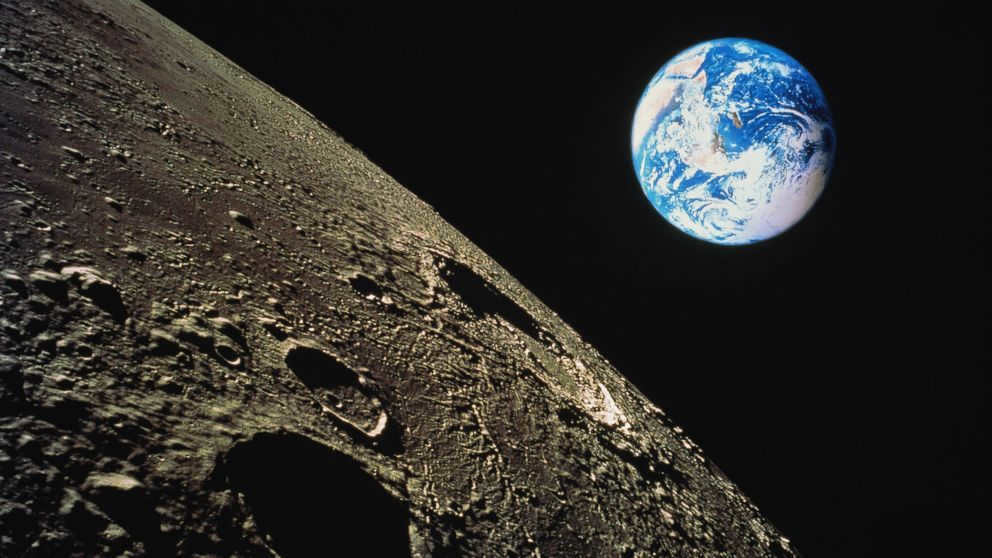
During that period, there was a prevailing belief that the Earth’s satellite possessed water, leading to the assumption that its exterior was adorned with vast bodies of water. It was the Italian astronomer Giovanni Riccioli who conceived the notion of assigning names to these features, names that have endured throughout history. The brighter sections of the lunar surface are now commonly referred to as land.
The primary features of the Moon
The Moon has a mass of 7.3476*10^22 kg, which is 81.3 times smaller than the Earth’s mass. The equatorial radius of the Moon is 1,737 km, which is 3.6 times smaller than the radius of the Earth. The average distance from the Earth to the Moon is 384,400 km.
When it comes to exploring our planet’s only satellite, scientists worldwide still find themselves pondering two questions:
- Can all celestial bodies be considered non-man-made?
- Are the Moon and Earth positioned where they are by mere chance?
Scientific minds sometimes have doubts for a variety of reasons. For instance, someone may adjust the diameter of a satellite, while someone else may position it in a specific distance from the Sun in order for it to completely block the view of the closest planet to the Moon, which is Earth, resulting in what is commonly known as a solar eclipse. However, if this “natural” satellite were altered in size – whether larger, smaller, or the size of Mars – people would not be able to witness such a phenomenon.
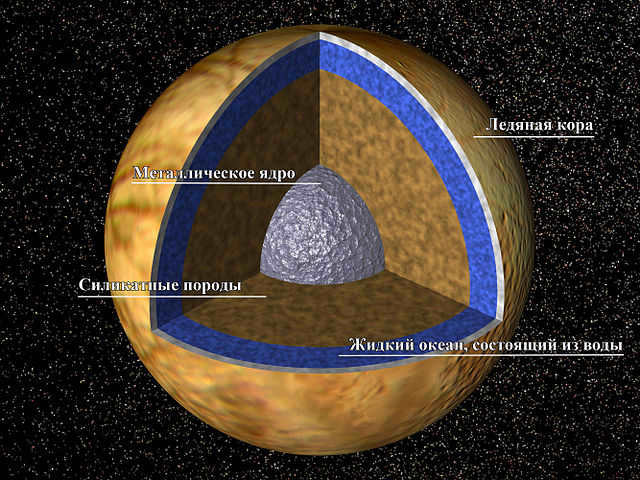
The Moon’s surface is completely covered in regolith, a mixture of dust and small meteorite fragments. These meteorites frequently collide with the unprotected lunar atmosphere. Scientists estimate that these layers of regolith can range from a few centimeters to several kilometers in thickness.
To illustrate, the composition of the Moon can be categorized as follows:
1. The crust, which varies greatly in thickness. For instance, beneath the Moscow Sea, it is separated from the surface by a basalt layer that can be up to 600 meters thick. On the dark side of the Moon, under the Korolev Crater, it can be as thick as 105 kilometers.
2. The mantle, which consists of three layers, starting with the outermost mantle.
3. The core, which is the metallic center of Earth’s satellite.
Interesting information about our nearest celestial neighbor
There is no “far side”
In reality, both hemispheres of the Moon receive an equal amount of sunlight. However, only one of these hemispheres is visible from Earth. This phenomenon occurs because the Moon’s axial rotation aligns with its orbital rotation. As a result, the Moon always presents itself asymmetrically towards Earth. Nevertheless, space probes are currently investigating the “far side” of the Moon.
The Impact of the Moon on Earth’s Tidal Patterns
The gravitational pull of the Moon creates two distinct bulges on the Earth’s surface. One bulge is located on the side facing the Moon, while the other bulge can be found on the opposite side. These bulges play a pivotal role in causing tidal movements across the entire planet.
The Moon’s Gradual Departure from Earth
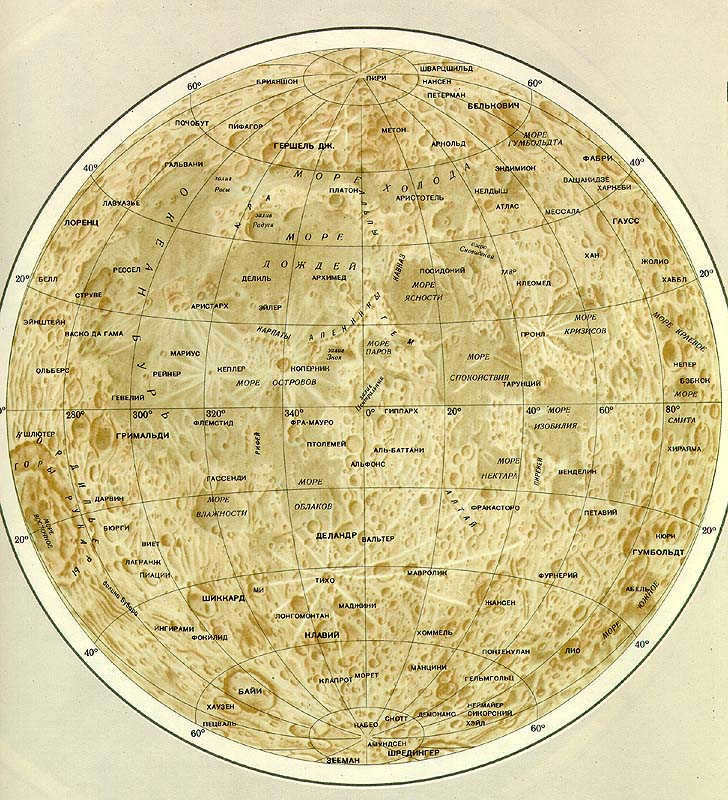
Each year, the Moon moves 3.8 cm farther away from the Earth. An estimation has been made that in fifty billion years, the Moon will completely break free from its orbit. At that point, it will have taken 47 days for the Moon to complete one orbit around the Earth.
The gravitational pull of the Moon is lower compared to that of the Earth, resulting in a reduction of 1/6 in the weight of individuals on the lunar surface. This is the main reason why astronauts on the Moon were able to jump much higher than they would on Earth.
Explorers on the Moon: 12 individuals have ventured to the lunar satellite
Starting from 1969 with Neil Armstrong’s historic first step on the Moon during the Apollo 11 mission, and concluding in 1972 with Eugene Cernan’s fortunate visit, a total of 12 astronauts have had the privilege of setting foot on the lunar surface. Since then, only robotic missions have been sent to explore the Moon.
Deficiency of Atmosphere on the Moon
The Moon’s surface is devoid of any shielding against an extensive range of cosmic radiation, solar winds, and meteoric onslaught. Additionally, it experiences extreme temperature oscillations, absolute silence, and a perpetually black sky.
Scientists are reporting findings regarding moonquakes
According to their claims, these quakes are a result of the gravitational pull of the Earth. By using seismographs, the astronauts were able to measure and determine the presence of cracks and fractures several kilometers beneath the lunar surface. It is believed that the moon has a molten core.
Unveiling the inaugural human-made satellite positioned on the Moon
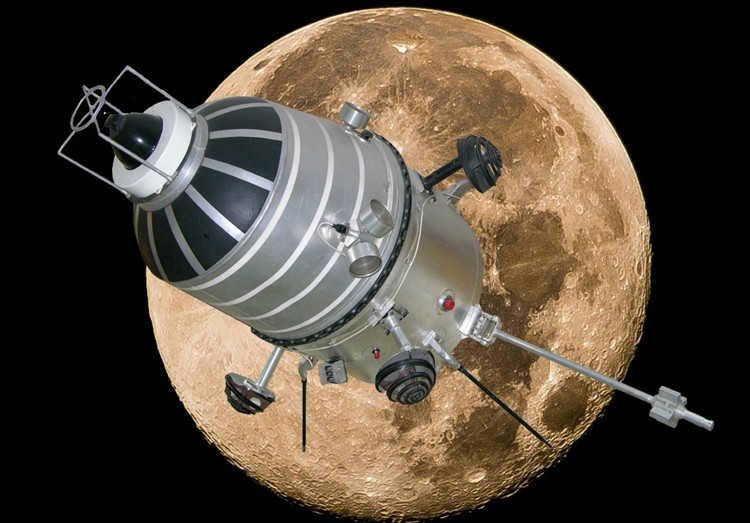
The Luna-1 program included a Soviet satellite that, in 1959, made a close flyby of the Moon, coming within 6000 km of its surface before entering into a solar orbit.
Is the Moon a man-made satellite?
In the early 1960s, Mikhail Vasin and Alexander Shcherbakov from the USSR Academy of Sciences proposed a hypothesis suggesting that the Moon could have been artificially created. This hypothesis is based on eight fundamental postulates and involves the analysis of various mysterious aspects related to the satellite.
The initial mystery: Could the Moon be a spacecraft?
In actuality, the Moon’s path and size are not easily explainable by conventional means. If we were to assume that everything is natural, these characteristics would be considered highly peculiar in the realm of the universe. This is due to the fact that the Moon is only a quarter of the Earth’s size, and typically the ratio between the sizes of satellites and planets is much smaller.
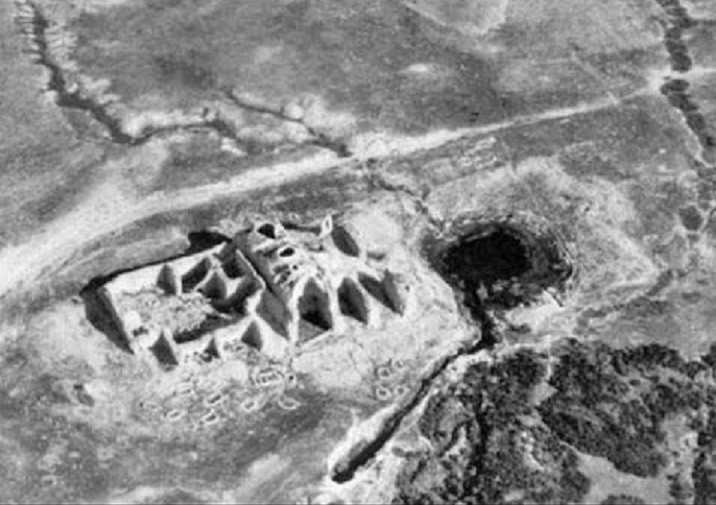
Due to the specific distance between the Earth and the Moon, the dimensions of the Moon appear to be the same as those of the Sun. This results in the occurrence of a total solar eclipse, which is a common phenomenon on Earth. The relationship between the size and mass of these two celestial bodies is determined by mathematical principles that seem impossible to explain. If the Moon had initially been attracted by the Earth, it would have followed a natural elliptical orbit. However, its orbit is surprisingly circular.
The second mystery: the presence of curved surface
The inexplicable curvature of the Moon’s surface is a phenomenon that scientists are unable to comprehend. Rather than being perfectly round, the Moon is believed to be a planetoid, resembling a hollow sphere. This unusual structure raises questions about its stability and how it manages to maintain its shape.
One theory proposed by scientists suggests that the lunar crust was artificially created and contains a rigid titanium framework. Russian scientists Vasin and Shcherbakov have discovered that the lunar crust and rocks possess an unusually high concentration of titanium, with some areas having a titanium layer that is at least 30 kilometers thick.
The Third Revelation: The Existence of Lunar Craters
Scientists attribute the absence of an atmosphere on the Moon to the vast array of craters caused by meteorite impacts. Unlike Earth, which is protected by kilometers of atmospheric layers that incinerate or break apart space bodies attempting to enter, the Moon lacks such protective measures. Consequently, its surface is adorned with a multitude of meteorite-induced indentations, ranging in size and shape.
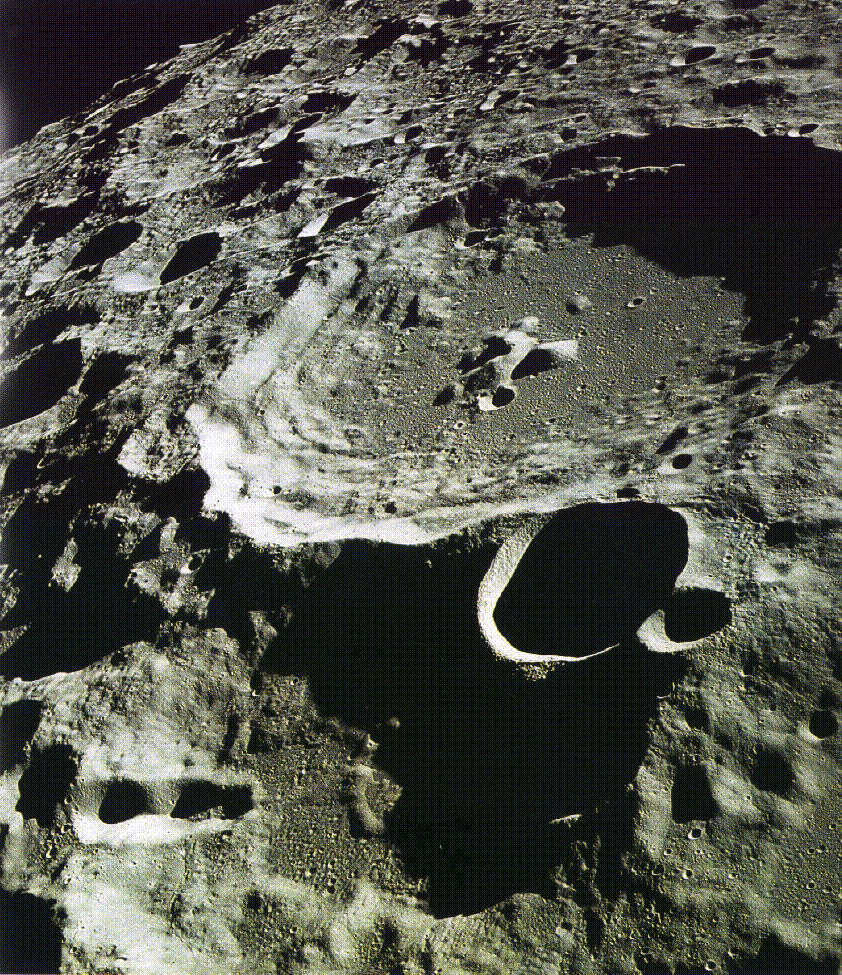
However, the shallowness of the moon’s craters remains unexplained. It seems that the remarkable strength of the lunar surface prevents meteorites from penetrating deeply into the satellite. Surprisingly, even craters larger than 150 kilometers in diameter do not exceed a depth of four kilometers. This phenomenon defies scientific explanation and is illogical. One would expect craters to have a minimum depth of fifty kilometers.
The fourth mystery: the existence of “lunar seas”.
Scientists continue to debate the origins of the lunar oceans and seas. One theory suggests that these bodies of water could have formed from cooled lava that flowed out after a barrage of meteorite impacts, assuming the moon was once a hot planetoid.
However, based on physical evidence, it is more plausible that the Moon, given its size, is a cold celestial body. There are also lingering questions about the whereabouts of these “lunar seas”. In fact, it has been discovered that 80% of these formations are located on the side of the moon that is visible to Earth.
The fifth hidden truth: the existence of mascons
The distribution of gravity on the surface of the moon is not uniform. This phenomenon was first observed by the Apollo VIII crew during their mission over the lunar seas. Mascons, short for “mass concentrations,” are specific locations where materials are gathered in higher densities or quantities. In the context of the Moon, this phenomenon is directly linked to the lunar seas, as the mascons are situated beneath them.
The sixth hidden truth: the presence of geographical asymmetry
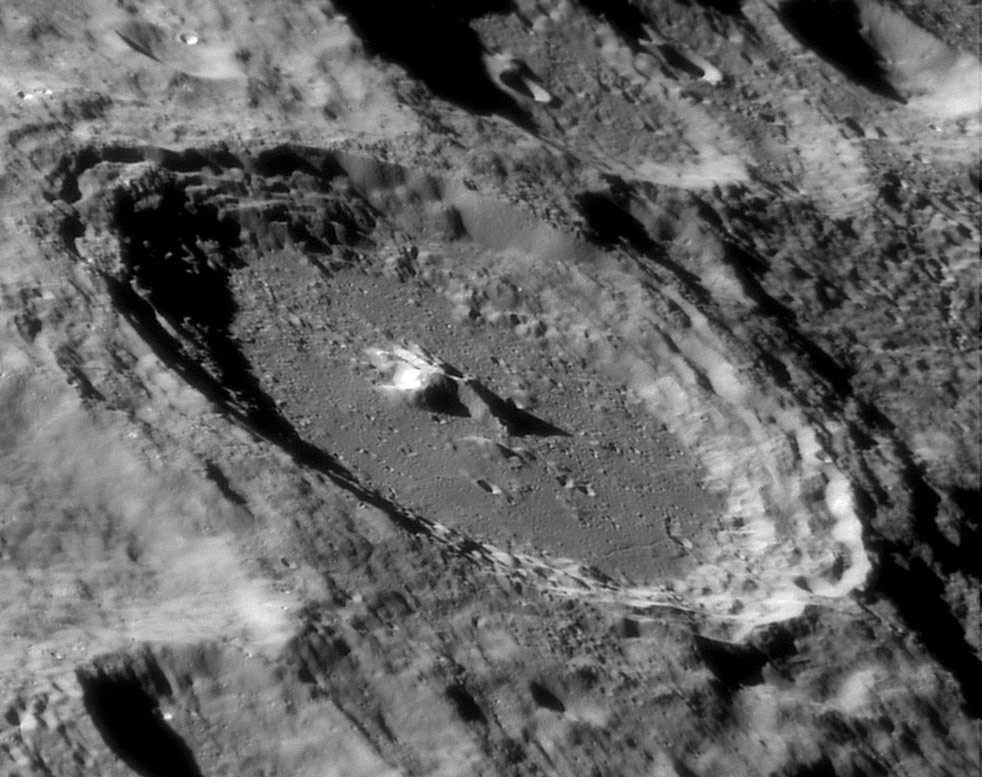
An unexplained phenomenon in the field of science is the existence of geographical asymmetry on the surface of the Moon. Surprisingly, the legendary “dark” side of the Moon contains a higher number of mountains, craters, and other distinctive landforms. Conversely, the side of the Moon that is visible from Earth is predominantly covered with seas.
The seventh mystery: low density
The density of the Moon is less than 60% of the density of the Earth. This fact provides evidence for why the Moon is not a planet, but a hollow object. Additionally, some scientists speculate that this hollow cavity may have an unnatural origin. However, based on the location of the identified surface layers, scientists suggest that the Moon may resemble a planet that formed “inside out”. This serves as an argument in favor of the “artificial casting” theory.
The 8th secret: the beginning
In the previous century, there were three widely accepted theories regarding the source of the Earth’s satellite. However, in today’s scientific community, the majority now supports the hypothesis that the Moon has an artificial origin, which is not without basis.
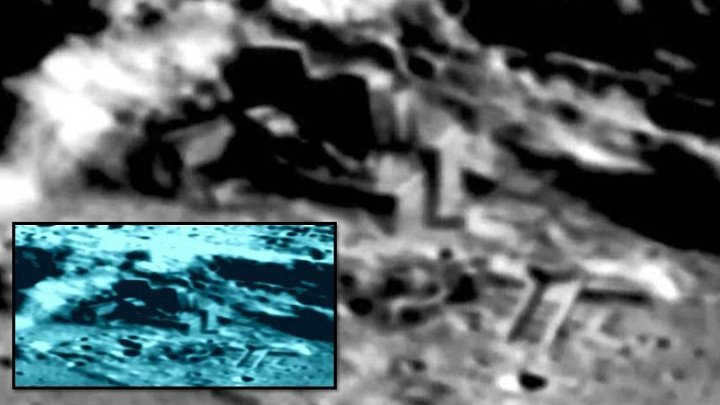
One hypothesis proposes that the Moon originated from a fragment of the Earth. Nevertheless, the contrasting characteristics of these two entities invalidate this hypothesis. According to an alternate hypothesis, the celestial body in question formed simultaneously with our planet, utilizing the same cloud of cosmic gases as building material. However, this preceding conclusion also applies to the aforementioned hypothesis. Both entities should possess at least similar structures.
A third hypothesis posits that the Moon, while traversing space, was attracted by the gravitational force of Earth. The major flaw in this hypothesis is that the Moon’s orbit is circular and periodic. Evidence would include an off-center or elliptical orbit.
But there is another hypothesis, the least likely of all. It could be utilized to account for numerous peculiarities connected with the satellite of the Earth. If it was created by intelligent entities, then the principles of physics that it follows would not be equally valid for other celestial bodies.
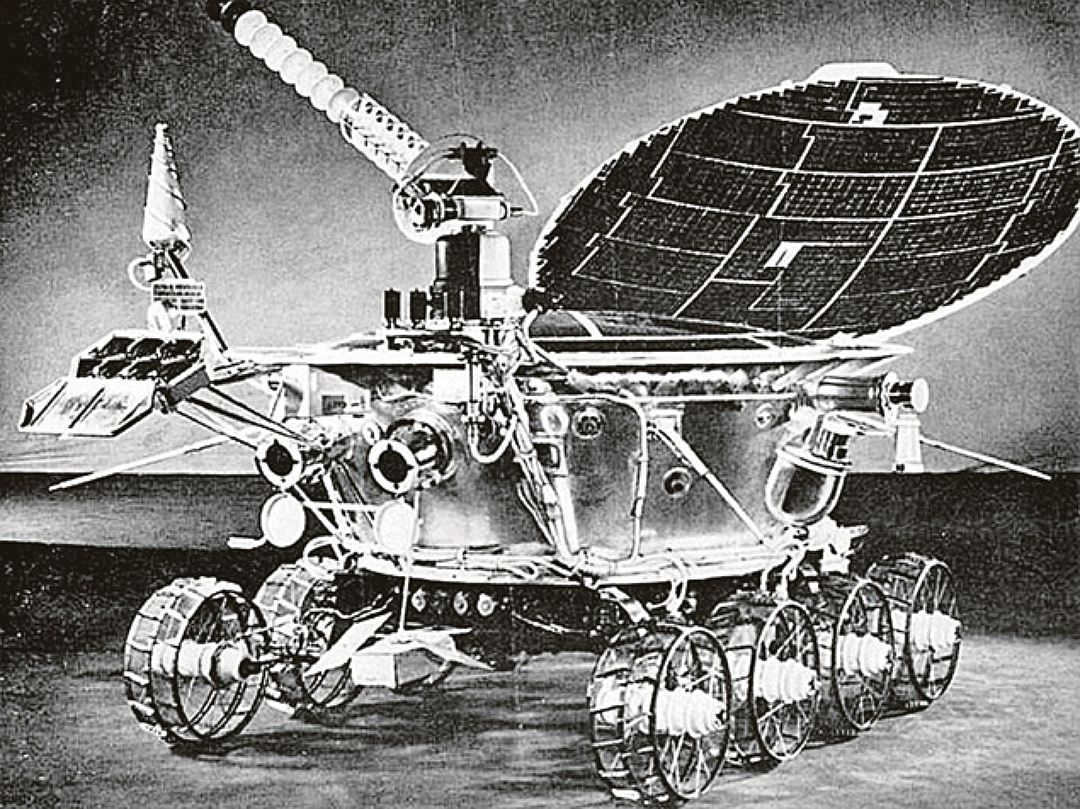

The theories proposed by Soviet scientists regarding the origin of the Moon are filled with intriguing possibilities. These theories are based on a fraction of the known physical data of lunar anomalies. Moreover, there exists a wealth of video footage, photographic evidence, and scientific studies that challenge the notion that our moon is entirely “natural”.

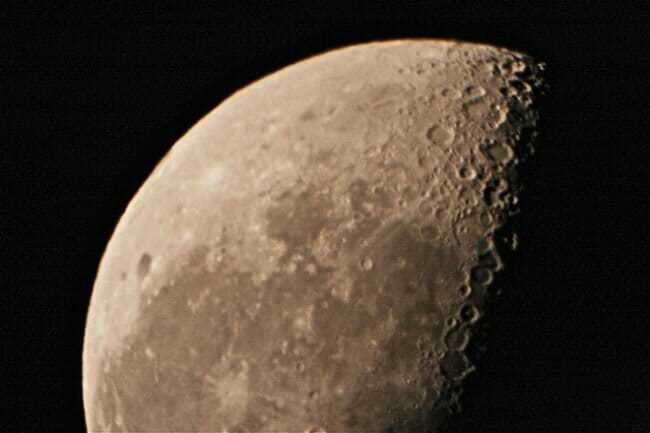
Solar system
We refer to our natural satellite as the moon. However, it is important to note that our planet is not the only one with a moon in the solar system. Moons orbit around planets, while planets orbit around the Sun. The scientific term for the Moon is a satellite, which is essentially a celestial body that revolves around another.
Moons of other planets
Moons are satellites that accompany planets on their journey around the Sun. Mars, for example, has two small moons, one of which resembles a rotating potato. The enormous planet Jupiter boasts a minimum of 16 moons, while Saturn has 17, and Uranus has 15 or even more. Neptune is home to over eight moons. The distant Pluto is orbited by a single moon called Charon, which is only half the size of Pluto itself. Venus and Mercury are the only planets in our solar system that do not have any moons.
What is the origin of the planets’ satellites?
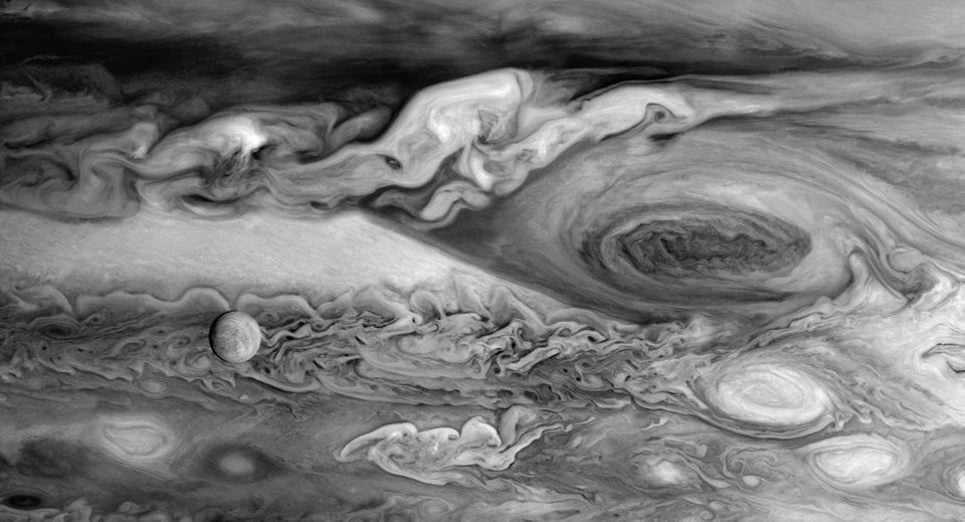
Different from our arid moon, the moons situated on the outskirts of the solar system are covered in typical ice. The surface of Jupiter’s moon, known as Europa, is so smooth that one could skate on it, resembling the surface of a billiard ball. All moons, including our own, were formed alongside the planets approximately 4.6 billion years ago. They originated from a hazy cloud of gas and dust encircling the newly born Sun. Over the course of millions of years, the particles within the rotating cloud merged together, creating progressively larger objects. At the conclusion of this process, both large and small celestial bodies were carried in orbit around the Sun.
There existed an enormous number of these celestial bodies, resulting in a continuous clash between them. Fresh planets collided with one another, causing large fragments to break off and propel into the vastness of space. The entire process resembled a marathon race with the elimination of competitors, except it spanned not a mere day, but millions of years. Once everything settled, the solar system took on its current shape. Encircling the Sun were nine planets, accompanied by over fifteen moons and countless asteroids, meteorites, and comets.
Fascinating tidbit: Research on lunar soil samples transported to Earth by astronauts reveals that the Moon was once blanketed by active volcanoes.
The circumstances surrounding the birth of our Moon may have been incredibly catastrophic and dramatic. By examining the Moon’s rocks and comparing them to those found on Earth, scientists have developed a fascinating hypothesis regarding the Moon’s formation. Over 4 billion years ago, our planet was young and extremely hot, causing the rocks on its surface to exist in a molten state similar to volcanic lava.
At that time, there was a large asteroid or small planetary body in close proximity to Earth. The paths of these celestial bodies intersected, resulting in a violent collision. The small planet collided with our Earth at a staggering speed of 40,000 kilometers per hour. This collision led to a massive explosion, propelling a significant amount of liquid lava into space. This lava was a combination of Earth’s molten rock and the asteroid’s molten rock. Some of this material fell back to Earth, which is why we still have samples of lunar soil beneath our feet.
Did you know: According to scientists, the Moon is thought to have originated from the molten material that was ejected into outer space when Earth collided with an asteroid.
However, the majority of this material remained in space and formed a circular structure that started orbiting around the Earth. As time passed, this structure cooled down, resulting in the Moon – the celestial body that illuminates the night sky and has been praised by poets.
An Engaging Video about the Moon
In case you come across any mistakes, kindly select the specific text and hit Ctrl+Enter.
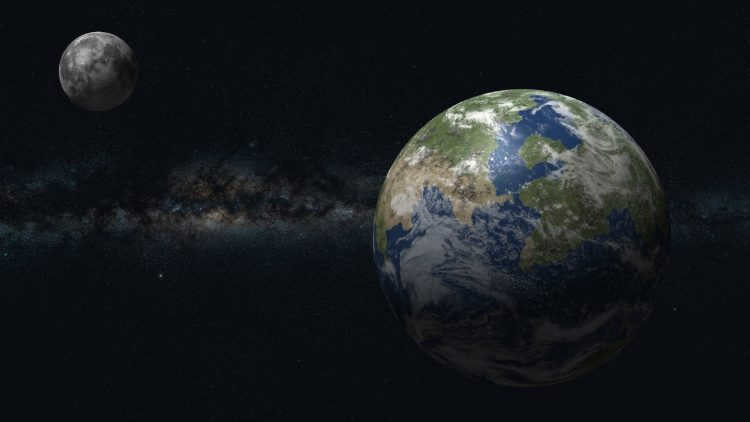
- Our solar system
The Moon – is Earth’s only natural satellite. It is the second most visible object in the sky, right after the Sun. As the Moon completes its orbit around Earth in about a month, the relative positions of the Earth, Moon, and Sun change, resulting in the different phases of the Moon.
Although the Moon does rotate around its own axis, it always shows the same face to Earth. This is because it takes the Moon the same amount of time to complete one rotation around its axis (27.3 days) as it does to orbit around Earth. Since the Moon’s rotation and orbit are synchronized, we can only see one side of the Moon from Earth.
- The initial spacecraft to successfully land on the Moon is called “Luna 2”. It was launched by the USSR on September 12, 1959.
- On July 20, 1969, American astronauts from Apollo 11 became the first humans to step foot on the Moon.
Even prior to the commencement of space exploration, astronomers had already noted the unique nature of the Moon.
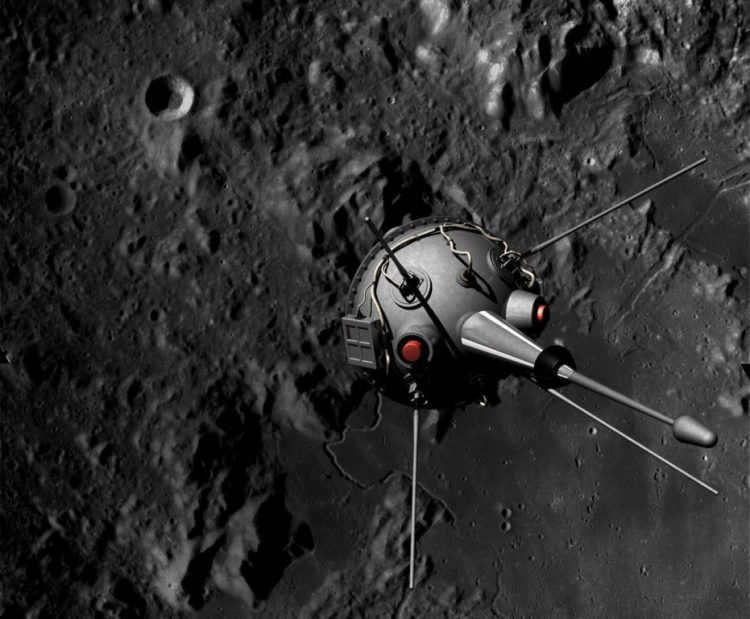
The Moon has a density that is lower than any planet in the Earth group (Earth, Mars, Venus, Mercury) – it is only 3.3 times denser than water. This unique characteristic indicates the extraordinary conditions under which the satellite was formed.
Through the analysis of soil samples from the Moon’s surface, scientists have determined its chemical composition and age (with the oldest samples dating back 4.1 billion years). This discovery has further complicated human understanding of the Moon’s origin.
Currently, the prevailing theory among scientists is that the Moon was formed through a collision between a large celestial body and the Earth.
Comparison of the Moon with Satellites of Other Planets
While not as prominent as other satellites in the solar system, the Moon is unique in being the largest satellite in relation to its planet, the Earth.

The Moon is an adequately large satellite. It is only surpassed in size by other satellites of planets like Io, Callisto, Ganymede, and Titan. Consequently, the Moon occupies the fifth position among the 91 satellites in the entire solar system, thanks to its substantial size.
- Perigee (the point in the Moon’s orbit that is closest to Earth) is approximately 363,104 kilometers away from Earth (although it can vary between 356,400 and 370,400 kilometers).
- Apogee (the point in the Moon’s orbit that is farthest from Earth) is approximately 405,696 kilometers away from Earth (although it can vary between 404,000 and 406,700 kilometers).
- The Moon orbits the Earth with an average speed of about 1,023 kilometers per second.
- The Moon’s orbit around the Earth is elliptical in shape and has a period of 27.3 days. Over time, the Moon gradually moves away from the Earth due to tidal acceleration at a rate of 38 millimeters per year, resulting in its orbit forming a slowly unwinding spiral.
Characteristics of the Moon’s Physical Properties
- Surface Temperature: The Moon experiences a wide range of temperatures, from -173 °C during the night to +127 °C at sunrise. At a depth of 1 meter, the temperature remains constant at -35 °C.
- Average Radius: The Moon has an average radius of 1737.1 kilometers, approximately 0.273 times that of the Earth.
- Surface Area: The Moon’s surface area measures approximately 3.793 x 107 square kilometers.
- Average Density: The Moon has an average density of 3.3464 grams per cubic centimeter.
- Acceleration of Free Fall: On the Moon, the acceleration of free fall is 1.62 meters per second squared (0.165 g).
- Mass: The Moon has a mass of approximately 7.3477 x 1022 kilograms.
Earth-Moon system
It is not entirely accurate to discuss the movement of the Moon around the Earth. More precisely, both of these celestial bodies orbit around their shared center of mass, which is located beneath the Earth’s surface. Examination of the Earth’s oscillations has revealed that the mass of the Moon is 81 times smaller than the mass of the Earth.
The Moon’s gravitational force leads to the formation of tides on Earth.
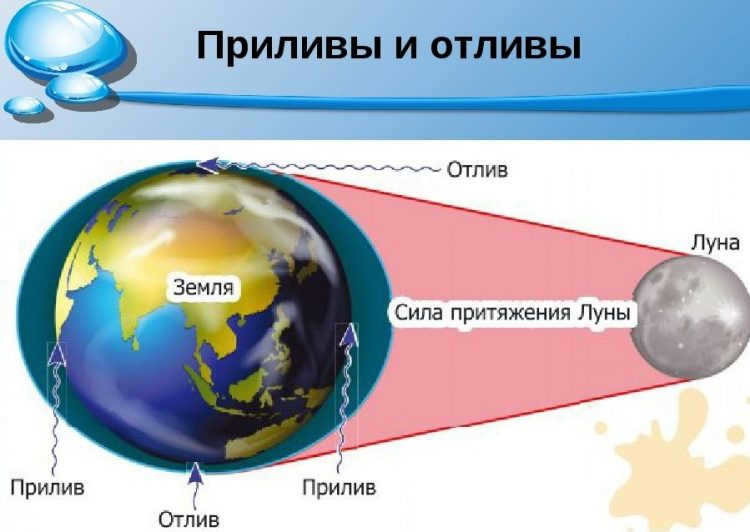
Tidal movements resulting from friction are responsible for the gradual deceleration of the Earth’s rotation, leading to a lengthening of the Earth’s day by 0.001 seconds every century.
As the Earth-Moon system adheres to the conservation of momentum, the deceleration of the Earth’s rotation causes the Moon to gradually drift away from the Earth. However, in the current era, the distance between the Earth and the Moon is actually decreasing at a rate of 2.5 centimeters per year due to the intricate interplay of forces between the Sun, the planets, and the Earth.
One side of the Moon always remains facing the Earth.
A phenomenon of the Moon appearing larger near the horizon
When the Moon is close to the horizon, it seems to be significantly bigger in size compared to when it is higher in the sky. This fascinating optical illusion has puzzled observers for centuries.
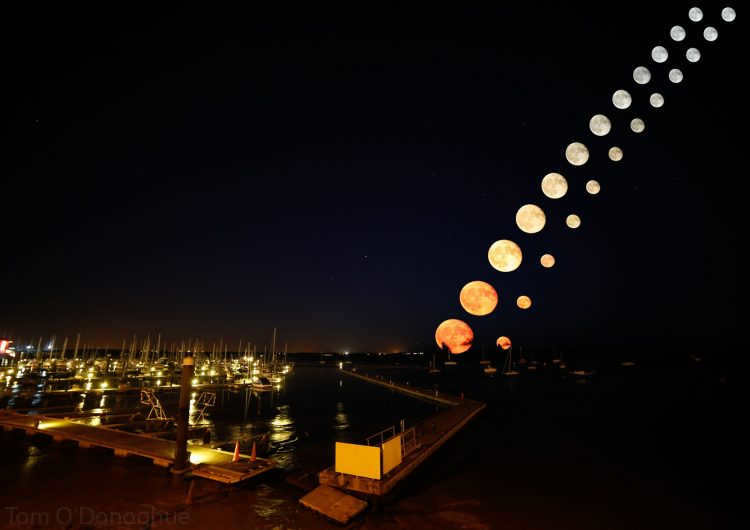
Based on psychological experiments, it has been observed that the human subconscious creates its own perception of an object’s size by considering the size of surrounding objects. When the Moon is higher in the sky, it appears smaller due to the vast empty space. However, when it is closer to the horizon, its size can be easily compared to the distance from the Moon to the horizon, which subconsciously reinforces the perception of its size.
Changes in the apparent shape of the Moon
When the Moon is illuminated from the side, it appears in the shape of a crescent. This is because the illuminated side of the Moon always faces the Sun, even when it is below the horizon.
The duration of the complete lunar phases, known as the synodic month, can vary due to the elliptical shape of the Moon’s orbit. On average, a synodic month lasts for 29 days, 12 hours, 44 minutes, and 2.82 seconds.
During the phases of the Moon close to the new moon (at the beginning of the first quarter and at the end of the last quarter), the crescent is very narrow and the unlit part of the Moon creates a faint glow known as the ash light of the Moon. This is the visible reflection of sunlight on the Moon’s ash-colored surface that is not directly illuminated.
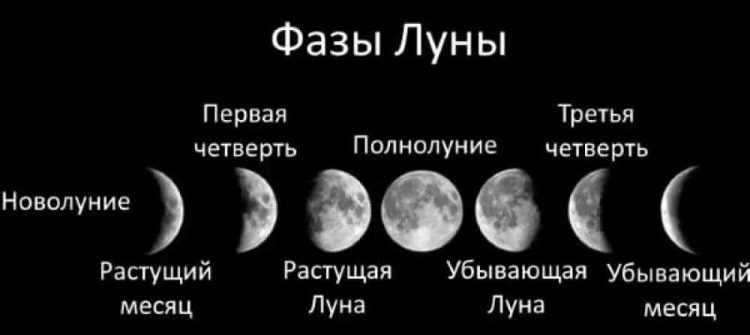
The Moon experiences various phases of illumination:
- New Moon – the phase when the Moon is not visible.
- Crescent Moon – the first appearance of a narrow sickle-shaped Moon in the sky after the New Moon.
- First Quarter – the phase when half of the Moon is illuminated.
- Waxing Moon – the phase when the Moon’s illumination is increasing.
- Full Moon – the phase when the entire Moon is illuminated.
- Waning Moon – the phase when the Moon’s illumination is decreasing.
- Last Quarter – the phase when half of the Moon is illuminated again.
- Old Moon – the phase when the Moon is no longer visible.
Mnemonic rule for determining moon phases
To differentiate between the first quarter and the last quarter, an observer in the northern hemisphere can utilize the following mnemonic rule. If the crescent shape of the moon resembles the letter “C” in the sky, then it signifies an aging or waning moon, indicating that it is the last quarter. Conversely, if the crescent shape is inverted, one can mentally add a stick to it to form the letter “P” – representing the moon in its growing phase, thus indicating that it is the first quarter.
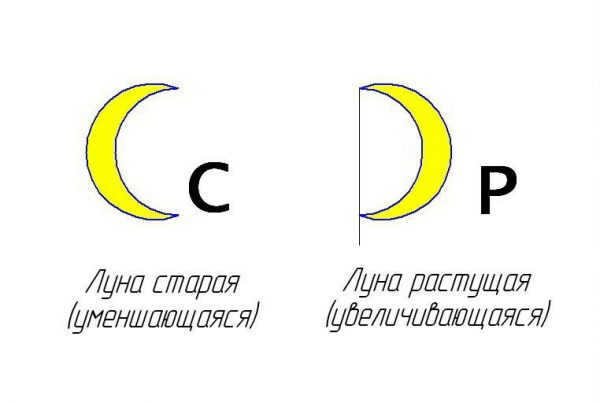
The phase of the moon that appears to be growing is typically observed in the evening, while the phase that appears to be aging is observed in the morning.
It is important to note that near the equator, the moon is always seen “lying on its side,” making this method unsuitable for determining the phase.
In the southern hemisphere, the orientation of the crescent during the different phases is opposite: a waxing moon (from new moon to full moon) resembles the letter “C,” and a waning moon (from full moon to new moon) resembles the letter “D” without the stick.
If the front edge of the moon is illuminated in the direction of the moon’s movement, it is waxing. If it is shaded, it is waning.
The Distinction between the Moon and the Earth
Despite being separated by approximately 400,000 kilometers, the Earth and the Moon share a close connection and possess the ability to exert influence on one another. For instance, the Moon has an impact on various aspects of Earth’s environment, such as triggering tidal movements in the oceans. Nonetheless, these two celestial entities exhibit several notable disparities.
Comparison
In terms of mass, the Earth is 81 times more massive than the Moon. Additionally, the radius of the Moon is approximately three and a half times smaller than the radius of the Earth.
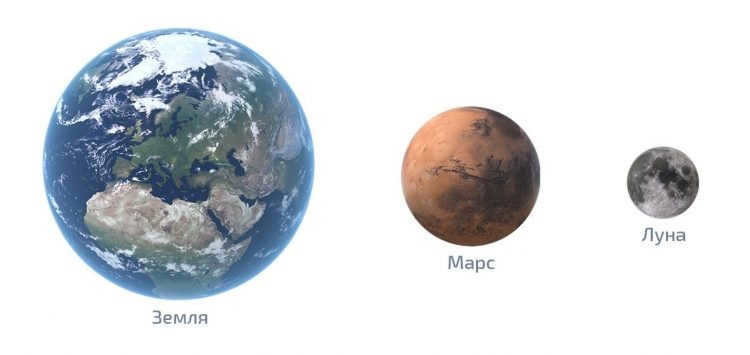
Comparison of the sizes of the Moon, Earth, and Mars
The Earth is encompassed by the geosphere – a gaseous envelope containing various impurities. The Moon, on the other hand, lacks an atmosphere, oxygen, and wind. As a result, the Moon’s surface can reach temperatures as high as 120°C under the scorching Sun during the day, and as low as -160°C at night.
While the Earth experiences brightness during the day and darkness at night, the Moon remains perpetually dim. During the day on the Moon, the sky is constantly black and cloudless. However, when the Sun shines brightly, the sky becomes filled with stars. From the perspective of Earth, the sky appears blue due to the scattering of the sun’s rays, making the stars invisible during daylight hours.
The Earth reflects sunlight approximately 50 times more intensely than the Moon.
Seas and oceans cover the majority of the Earth, while continents and islands occupy a smaller portion. On the other hand, the Moon’s surface is made up of mountainous terrain and lunar seas, which are huge craters filled with solidified lava.
The lunar mountains are believed to have formed as a result of massive meteorite impacts, whereas the mountains on Earth are the product of tectonic activity.
The Moon is coated with a mixture of rocky debris and fine dust known as regolith. This regolith can be several tens of meters thick.
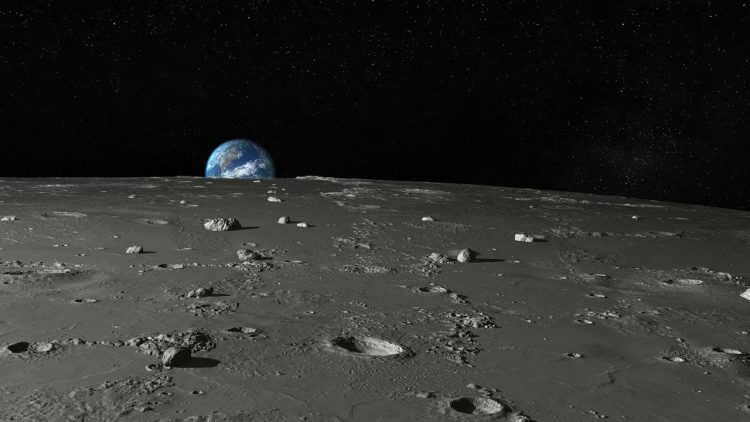
Unlike its counterpart, Earth, the Moon lacks volcanic activity and has scarce amounts of water (aside from minimal ice reserves). While the Earth’s surface undergoes constant exposure to water and wind, the Moon’s surface remains uneroded and unweathered.
In terms of magnetic field strength, the Moon’s is notably feeble, and its gravity is a mere one-sixth of that found on Earth.
The chemical composition of both celestial bodies differs. Notably, the Earth boasts a substantial amount of iron, while the Moon possesses virtually none.
Findings
- Comparatively, the Moon is only 81 times lighter than the Earth.
- The average radius of the Moon is approximately 3.5 times smaller than that of the Earth.
- Unlike the Earth, the Moon lacks an atmosphere, oxygen, water, and any form of organic life.
- While the Earth experiences brightness during the day and darkness at night, the Moon’s sky remains perpetually black and cloudless.
- The Earth reflects sunlight approximately 50 times more intensely than the Moon.
- The Earth’s surface is characterized by continents, oceans, seas, and islands, whereas the Moon’s surface features mountains and lunar seas in the form of giant craters.
- The Moon exerts only one-sixth of the gravitational force experienced on Earth.
- While the Earth possesses a magnetic (geomagnetic) field, the Moon has a negligible magnetic (geomagnetic) field.
Watch the video
The Moon’s Formation: An Unlikely Event
Researchers from the Institute of Geochemistry and Analytical Chemistry (GEOCHI) at the Russian Academy of Sciences, under the jurisdiction of the Russian Ministry of Education and Science, have investigated various theories regarding the origin of Earth’s satellite, and have determined which one is the most plausible.
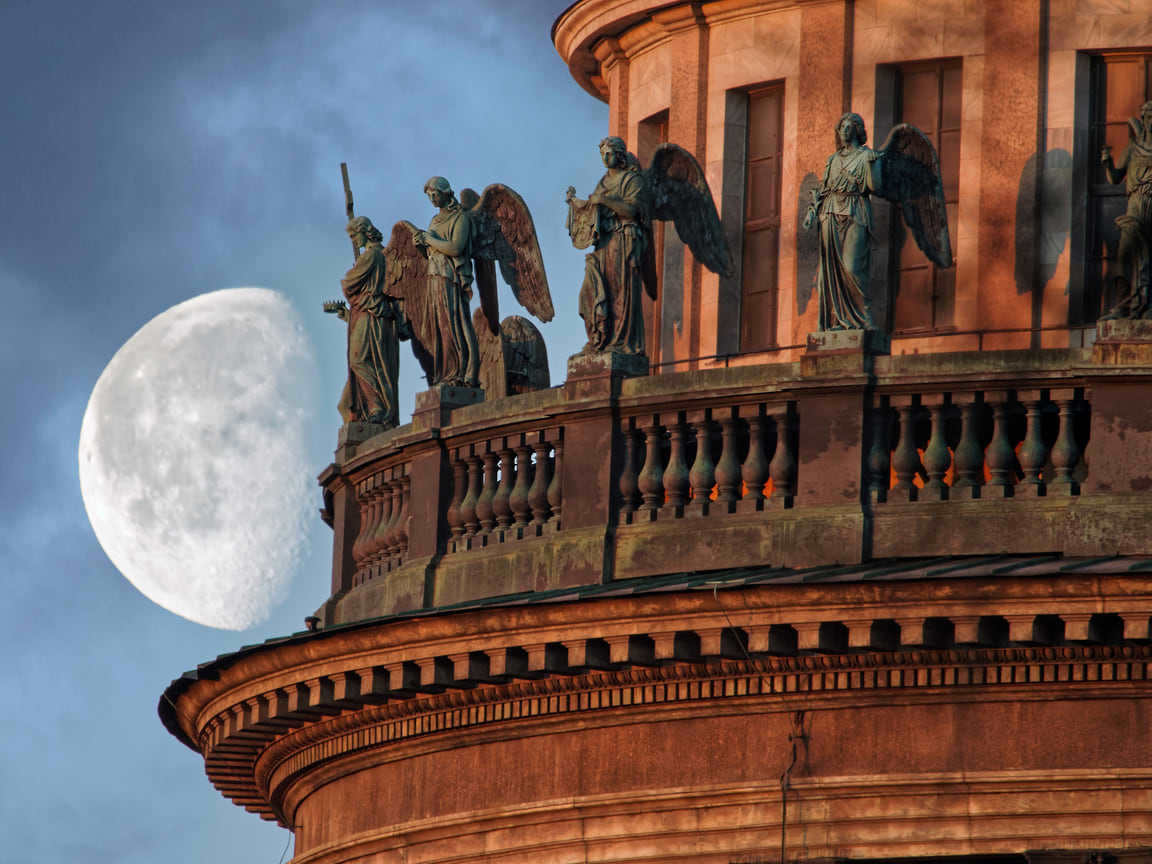
Click here to view in full screen
Image Credit: Alexander Petrosyan, Kommersant
The prevailing theory suggests that our planet came into existence as a result of the Big Bang. An enormous explosion occurred, scattering matter and energy throughout space. Over time, this matter and energy came together to form countless stars, which eventually merged to create numerous galaxies. Approximately 4.567 billion years ago, the Earth was formed by collecting the dust and gas left behind from the Sun’s formation within the protoplanetary disk.
Scientists are still debating the origins of the Moon, our planet’s satellite. There are four main theories on how it came to be: the coaccretion theory, the multi-impact theory, the megaimpact theory, and the theory of the Earth and the Moon forming from a single rarefied condensation. However, this question remains unresolved to this day. In a scientific article, researchers from GEOCHI RAS critically examined each of these theories and discussed the most probable one, in their opinion, regarding the Moon’s origin and the bond between our planet and its satellite.
“Thus, in light of the potential utilization of the Moon for exploration and the establishment of extensive lunar infrastructure, it is crucial for scientists to examine the resources present on the Moon, including their mineral composition, distribution, and global mapping,” emphasized Dr. Sergey Ipatov, a renowned expert in thermodynamics and mathematical modeling of natural processes at GEOHI RAS.
The Moon originated from a collection of tiny objects (coaccretion theory)
Who was the first to suggest this theory? The theory was initially put forward in 1785 by Immanuel Kant, a German philosopher. It was further developed by Soviet mathematicians Otto Schmidt, Eugenia Ruskol, and Viktor Safronov.
One of the most prevalent explanations for how the Moon formed is the concept of coaccretion, derived from the Latin term “Assertio” meaning joining. According to this theory, the Moon and the Earth both came into existence simultaneously. As the young Earth developed, a disk akin to Saturn’s rings gradually formed through the aggregation of solid meteorite particles, dust clouds, and gas. This disk eventually gave rise to the Moon. In the Schmidt-Ruskol-Safronov model, the primary source of the swarm of bodies near Earth was the capture of particles from the pre-planetary disk during collisions, both between “free” particles and between “free” and “bound” particles. This model is the oldest one proposed for the Moon’s formation.
The formation of the Moon occurred due to a massive impact from Theia (megaimpact theory)
The proposal of this theory was made in 1975 by American researchers, William Hartman and Donald Davis.
The megaimpact model, proposed by a group of authors, suggests that a catastrophic collision between a proto-Earth and a Mars-sized body called Teia took place approximately 4.5 billion years ago (Hartman and Davis, 1975; Cameron and Ward, 1976; Canup and Aspaug, 2001; Canup, 2004, 2012; Canup et al., 2013; Cook and Stewart, 2012; Cook et al., 2016; Baer, 2016). This collision resulted in the ejection of Earth’s molten silicate mantle into a close Earth orbit. Over time, the fragments of this ejection formed a protoluna, which gradually moved into its current orbit through tidal interaction with the Earth during its evolution. The main motivation behind this hypothesis was to explain the Moon’s average density, which is similar to that of the Earth’s mantle.
What is the problem with this theory? This theory fails to explain the close isotopic composition of several elements found in both the Earth and the Moon. These elements include oxygen, iron, hydrogen, silicon, magnesium, titanium, potassium, tungsten, and chromium. Academician Eric Mikhailovich Galimov has published numerous criticisms of the megaimpact theory, which can be found in his works (Galimov et al., 2005; Galimov, 2011; Galimov, Krivtsov, 2012). According to these scientists, it is difficult to believe that the Moon, even if formed from a body in close proximity to the Earth, would have a composition similar to that of the Earth. This is because, in this model, most of the Moon’s matter is formed from the impactor rather than the proto-Earth. These findings cast doubt on the geochemical justification of the megaimpact model. Additionally, the presence of carbon on the Moon’s surface contradicts the idea that it formed after a catastrophic collision between the proto-Earth and Theia.
The Earth and Moon were created through the collision of a single substance (multimapact theory)
Who proposed this theory? A. Ringwood from Australia suggested this model in 1989. Russian scientists A. V. Vityazev and G. V. Pechernikova also considered this theory in 1996. N. N. Gorkav (2007), V. V. Svettsov et al. (2012), V. N. Afanasyev and G. V. Pechernikova (2022), and Israeli scientists R. I. Citron et al. (2014), R. Rufu and O. Aaronson (Israel, 2015) have also explored this idea. In 2017, R. Rufu et al. conducted a study modeling impacts from objects with masses ranging from 0.01 to 0.09 times that of Earth. They found that impacts that occurred at near-vertical angles resulted in a smaller amount of impactor material being ejected.
The multi-impact model differs from the megaimpact model in that it takes into account multiple collisions between bodies and the Earth. Instead of just one collision, this model suggests that sparse gas-dust clumps were formed in the gas-dust disk surrounding the Sun. These clumps were then compressed into solid bodies known as planetesimals. Unlike two colliding cobbles, planetesimals had a chance to unite. The planetesimals played a role in the accretion of the Earth-group planets and the Moon.
This theory gained popularity because it not only satisfies geochemical constraints, but also provides an explanation for the observed differences in the chemical composition of the Moon and Earth. These differences include the Moon’s iron deficiency, the association of volatiles, and the enrichment of refractory oxides such as aluminum (Al), calcium (Ca), and titanium (Ti) in the Moon’s substance compared to the Earth.
Are there any downsides to the hypothesis? The multi-impact model fails to account for the presence of a Moon around Earth while the other planets in the Earth-group lack large satellites.
The Earth and Moon originated from a solitary rarified clot
Who put forward the hypothesis? Russian scientist Eric Galimov (Galimov et al., 2005; Galimov, 1995, 2008, 2011, 2013; Galimov, Krivtsov, 2012; Vasiliev et al., 2011).
Scientists have proposed a theory that suggests the Earth and Moon were created from a cloud of gas and dust. This idea is supported by geochemical data on the composition of lunar matter. Galimov’s research indicates that the Moon could not have formed earlier than 50 million years after the solar system’s origin. Before the Moon condensed into a solid body, it likely existed in an environment with a higher ratio of rubidium to strontium (Rb/Sr). Rubidium, with its high atomic weight, would not have been able to escape from the Moon’s surface, but could have escaped from heated surfaces of small bodies or particles. According to Galimov, the original material of the Moon was likely dispersed for the first 50 million years, possibly in the form of a gas-dust cluster. Researchers believe that approximately 40% of the volatile matter, including iron oxide (FeO), in the dust particles that formed the Moon and Earth vaporized. This resulted in the initially high-temperature embryos of both celestial bodies being depleted in iron equally. The outer particles that did not become part of the initial embryos remained cooler and retained iron. As the embryos grew, they collected particles rich in iron. However, the Earth’s embryo grew at a faster rate than the Moon’s, leading to the Moon having a relatively low iron content, while the Earth accumulated a larger portion of the dust cloud and acquired a high iron content. This model of Earth and Moon formation aligns with a significant amount of geochemical evidence.
Is there an issue with Galimov’s theory? According to the theory, it took tens of millions of years for the sparse lump to compress into the embryos of the Earth and Moon. However, other experts studying the formation and evolution of condensations have not found evidence of such long periods of condensation existence after the start of the solar system’s formation. Marov et al. (2008) propose that the evolution of the near-solar protoplanetary disk prior to the formation of the dust-enriched subdisk occurred over a period of 1 to 2 million years.
The Galimov et al. model suggests that the millimeter-sized dust particles in the thickening, with a radius of 5.5 Earth radii, contained very little iron. However, the particles within the Hill sphere, which is the region around a planet where it can hold its satellite, were found to be enriched in iron. According to Galimov and Krivtsov (2012), the total mass of the initial nucleations needed to explain the iron content of the Earth and Moon is 0.047 times the mass of the Earth (ME). This study also calculated the compression of the thickening with a radius of 5.5 Earth radii, which had a mass equal to 1.023 times the mass of the Earth. Despite these findings, Galimov et al. did not provide an explanation for the whereabouts of 95% of the iron-depleted matter from the inner part of the thickening, until the embryos started growing using the matter from the outer part of the thickening.
There has been no published research on the creation of condensations in the region of Earth-like planets with masses equal to or greater than that of Earth. Therefore, the issue of whether massive condensations can form (as discussed by E. M. Galimov and A. M. Krivtsov, 2012; S. V. Vasiliev et al., 2011) is still unresolved.
The theory was proposed by Russian scientist Sergey Ipatov in 2018. (DOI: 10.1134/S0320930X18050043)
It is believed that the gas-dust protoplanetary disk created clusters of material that led to the formation of solid planetesimals and potentially the embryos of planets through compression. The theory of Moon formation suggests that the embryos of both Earth and the Moon could have been formed as a result of compressing a common rarefied condensation. According to calculations by D. Nesvorny et al. (2010), the condensation would need to possess a certain amount of angular momentum in order to give rise to a satellite system during compression instead of collapsing into a single body. Ipatov (2018) demonstrated that the necessary angular momentum for a satellite system to form could be acquired through the collision of two condensations, resulting in a condensation that, when compressed, produced the embryos of Earth and the Moon. This level of angular momentum was not present in the condensations that produced the embryos of other planets in the Earth group without satellites, explaining why these planets lack large satellites. Similar to the multi-impact model, the Moon’s embryo could have primarily grown by collecting and incorporating iron-depleted matter from the Earth’s crust and mantle that was ejected during collisions with celestial bodies, some of which may have been small. Thus, the Moon’s embryo originated from the same condensation as Earth and primarily grew from matter expelled by our planet’s embryo.
Ipatov’s theory offers an explanation as to why a moon-like satellite did not form around other planets in the Earth group, unlike other theories. The likelihood of two rarefied condensations colliding and producing a condensation with enough angular momentum to create a binary system consisting of two embryos during condensation compression is low. The condensations that gave rise to the embryos of other Earth group planets did not possess the necessary angular momentum for the formation of a large satellite during their compression. The embryo of the Moon, formed during condensation compression, played a role in capturing matter expelled from the growing Earth during its numerous collisions with planetesimals. According to the models of multi-impact and coaccretion, this embryo could have grown much faster compared to the scenario where such a sizable Moon embryo was not present initially.





